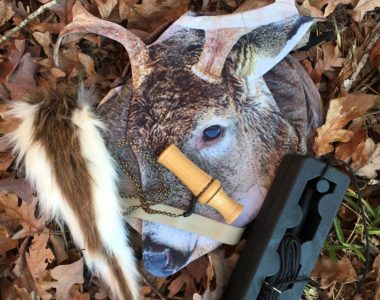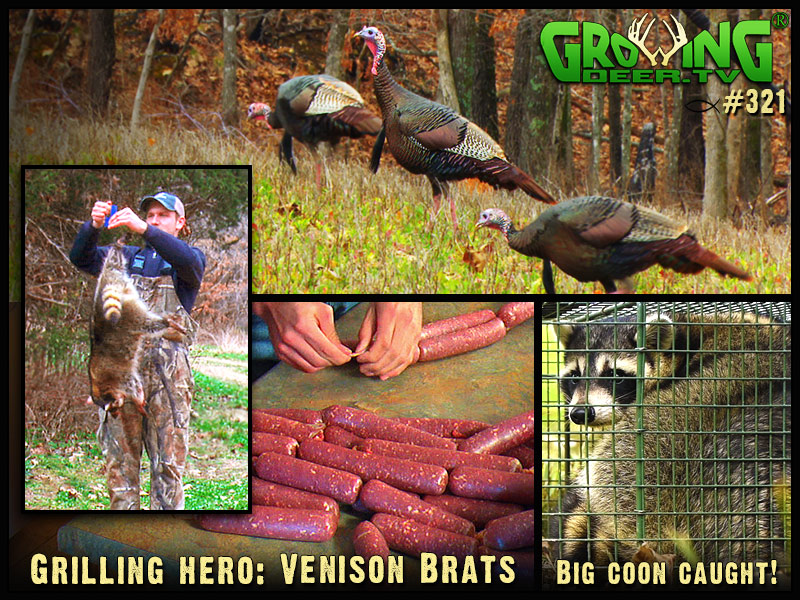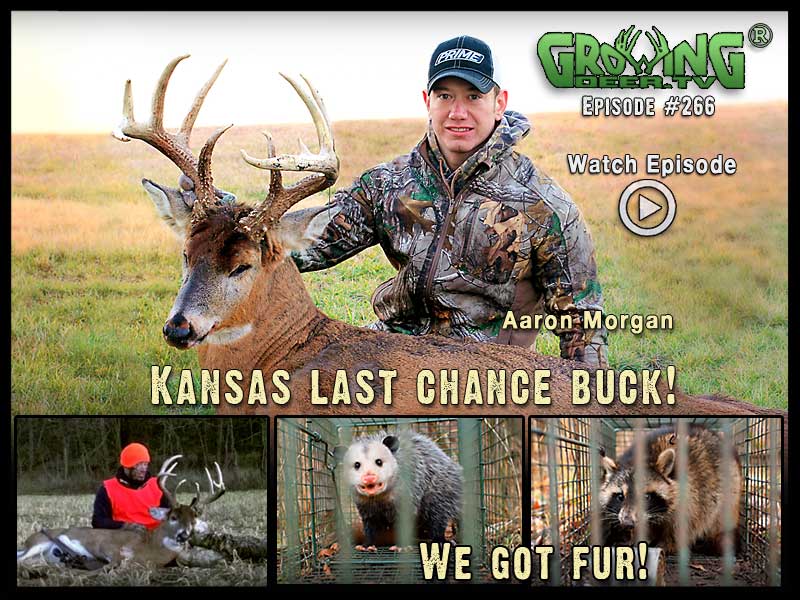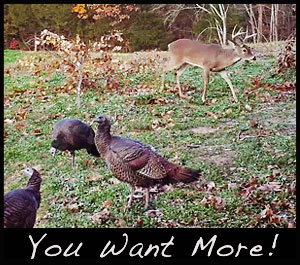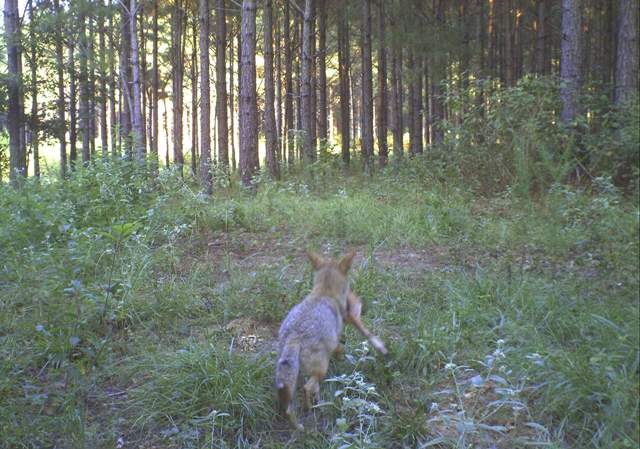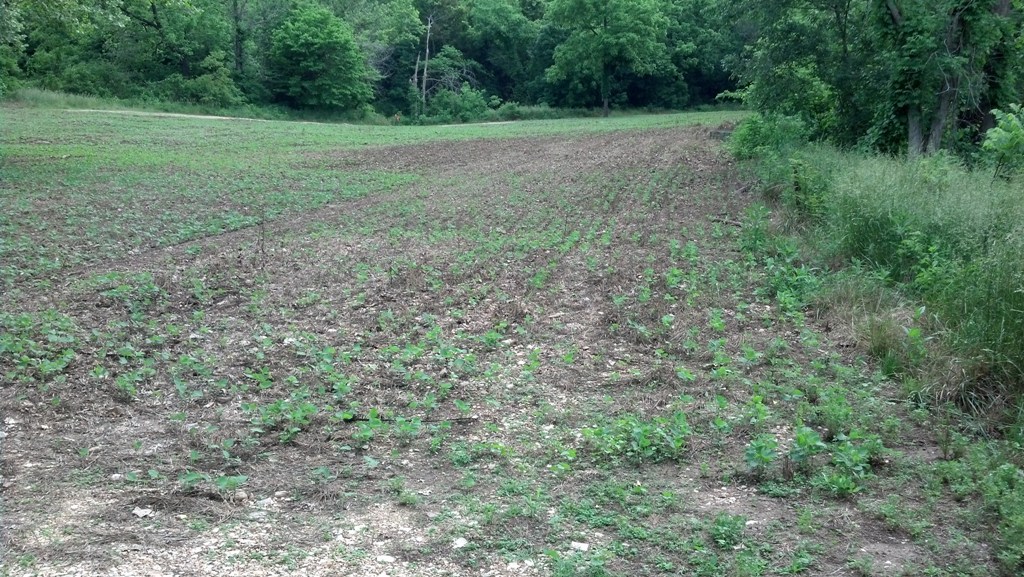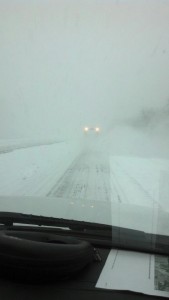Category: Trapping
Trapping Tip: Use Trail Cameras to Scout
We use trail cameras to help monitor nest predator activity. If there is a lot of activity, we’re setting a Duke trap! This technique has been effective and helps save time locating trap locations.
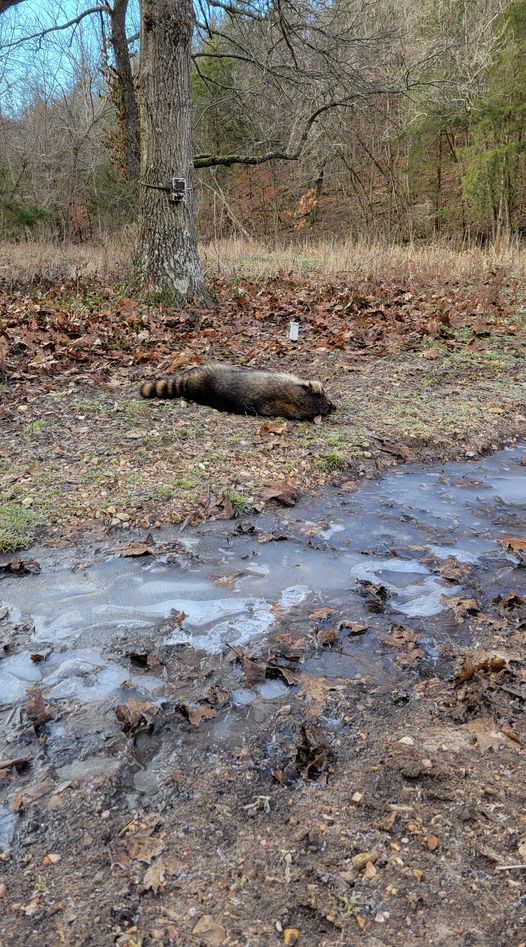
Trapping Locations: Thermals and Scents
When selecting a trap site, consider the direction thermals/air will carry scent during the night (when predators are most active). Traps/bait up wind of a critter’s travel path is best to ensure they smell the bait.
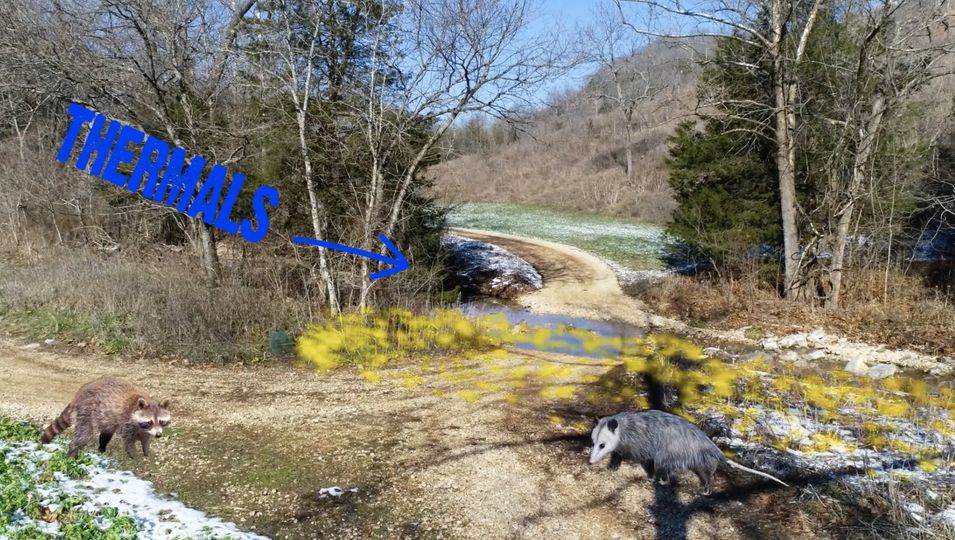
Trapping At The Proving Grounds
When I was a young boy in the 1970s raccoon hides sold for $40+ in my neighborhood and gas was $0.70 per gallon. Now raccoons bring less than $10 in the same area and gas is over $2.00 per gallon. We all know the price of fuel, steel, etc., has increased dramatically. There is very little incentive for trappers, except for the love of the work, to remove predators. Predator species have few predators in most areas.
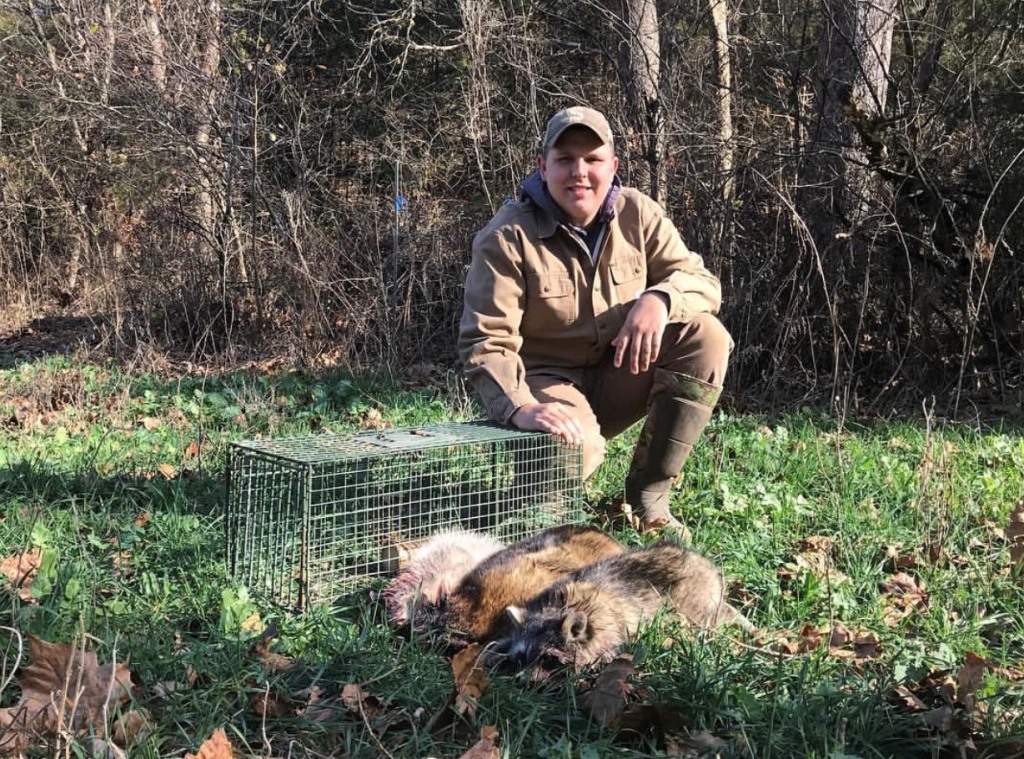
The benefits of trapping include removing predators and learning a lot about all critters. If you can get good enough to make a predator stick its hand in a little two inch circle, you can figure out how to pattern deer. So, trapping makes for a better deer hunter. In addition, it makes hunting better by allowing more prey species to flourish. It’s just a great all around scenario.
“Balance” is a tough objective to achieve in most aspects of wildlife management. This is because the habitat and populations are always changing. It is a fantasy that wildlife populations or habitat will remain balanced without man’s intervention. Allowing either predator or prey species to build up too high always results in bad results. This has been documented time and time again in species like deer, rabbits, wolves, etc.
However, given that the habitat resources are becoming more and more limited, big swings in population levels don’t recover as easily. I don’t wish for predators – bobcats, opossums, fox, raccoons and coyotes – to remove most of the prey species – turkey poults and whitetail fawns – at my farm. I want there to be enough turkey and deer for me and the predators. There aren’t many predators of bobcats and coyotes where I live. There certainly aren’t many trappers in my neighborhood. My efforts to trap some predators will certainly not hurt the coyote or bobcat population in the county.
On this property, we work to maintain a reasonable balance between predators and prey. The balance means there are plenty of prey (turkey and venison) for us and the predators to eat. Having just enough prey for only the predators to eat and me shifting to playing ping pong is not an option. I’m going to work to provide good quality habitat which benefits both the predators and prey species, and trap and call to make sure the predators have a predator. Are you managing all the species on your property, or just the prey?
We’ve removed a lot of predators but more move in. If you create a void, remove a bunch of predators, don’t think that you can stop and not trap the next year. I’ve been removing about 50 predators every year: bobcats, coyotes, coons, opossums, skunks and foxes. Our turkey population has absolutely exploded and we’re seeing some quail now. We’ve seen a big response in our game.
Trappers are not motivated to trap for money because they’re only getting one to two dollars per coyote. If you’re really trying to increase the number of deer or turkey on your land, hire a trapper or do what I do and learn how to trap yourself. I’ve hired professional trappers but also supplement by using box traps and the Duke dog-proof traps. Currently our intern, Tyler, is effectively removing predators. Coons and opossums are easy while coyotes and bobcats are a little tougher. We’ll keep you updated on our progress over the coming months.
Enjoy Creation,
Grant
Hunting the Rut: Tactics for Tagging Head Turner – Episode #419
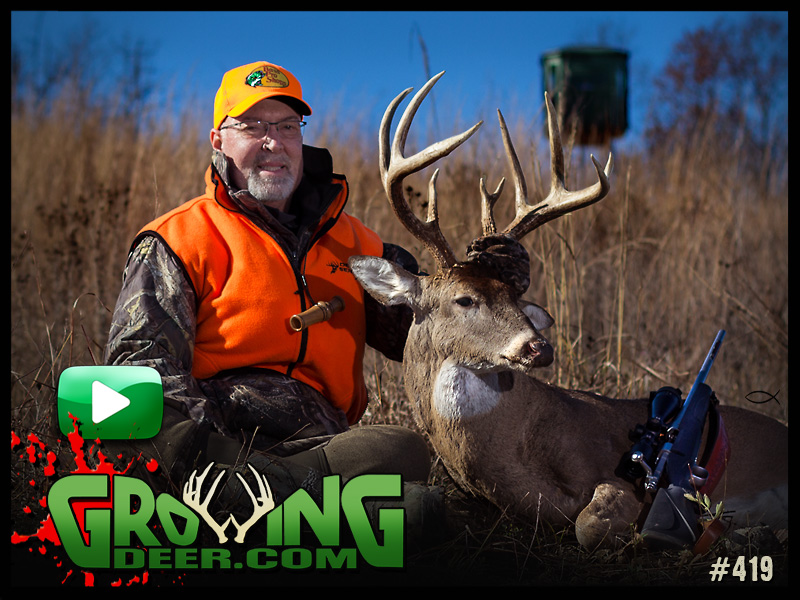 New Video
New Video
It is the rut and Grant’s hunting a mature buck! Learn how Grant adjusted his hunting strategy specifically for the rut. The plan worked and Grant tagged one of our top hit list bucks, Head Turner!
SPECIAL OFFER:
Montana Decoy is offering the perfect gift or starter pack for any deer hunter! Includes Freshman Decoy, Teaser Tail, Rattle Cage by Rocky Mountain Hunting Calls and Messenger Grunt call by Hook’s Custom Calls. Only at Montana Decoy.
new weekly blog:
Wanting to spice up your meals and try something different? Here
is a standard recipe for jambalaya with a few modifications to make
it work with venison!
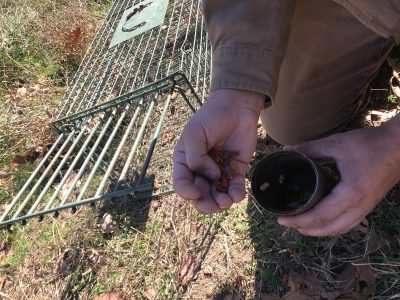
Tip of the Week:
Cat food is a cheap, meaty-smelling bait that works great for trapping nest predators such as raccoons and opossums.
Winter Projects – Episode #321
Imagine your buddy’s face when you show him the beautiful venison brats you’re cooking on the grill. You can do it. Tracy and Daniel will show you how.
In most of the whitetails’ range, the does have been bred and the late winter stress period is here. There are ways you can help deer during this stress period in addition to providing quality forage. These include providing quality trace minerals and balancing the predator and prey populations. We’ve got tips to help you with both these management practices.
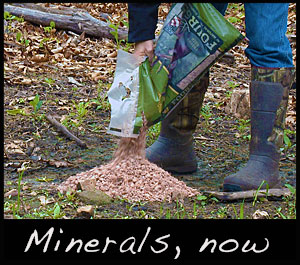
Tip of the Week:
The winter stress period is here. This can be a very tough time on both pregnant does and post rut bucks. Providing Trophy Rock Four65 during this stress period benefits the entire herd! Don’t wait untll fawns are born and antlers are developing. Make sure deer have access to quality trace minerals now!
Trapping Success
Over the past weeks we have set many Duke cage and dog proof traps at The Proving Grounds. Even though fur prices are the lowest they’ve been in decades, we are trying to do our part to manage the local predator population. We have already removed 28 nest predators and there are still two weeks left in trapping season!
Even though the season is not yet over, it is obvious that our trapping efforts have been successful. How do we measure that success?
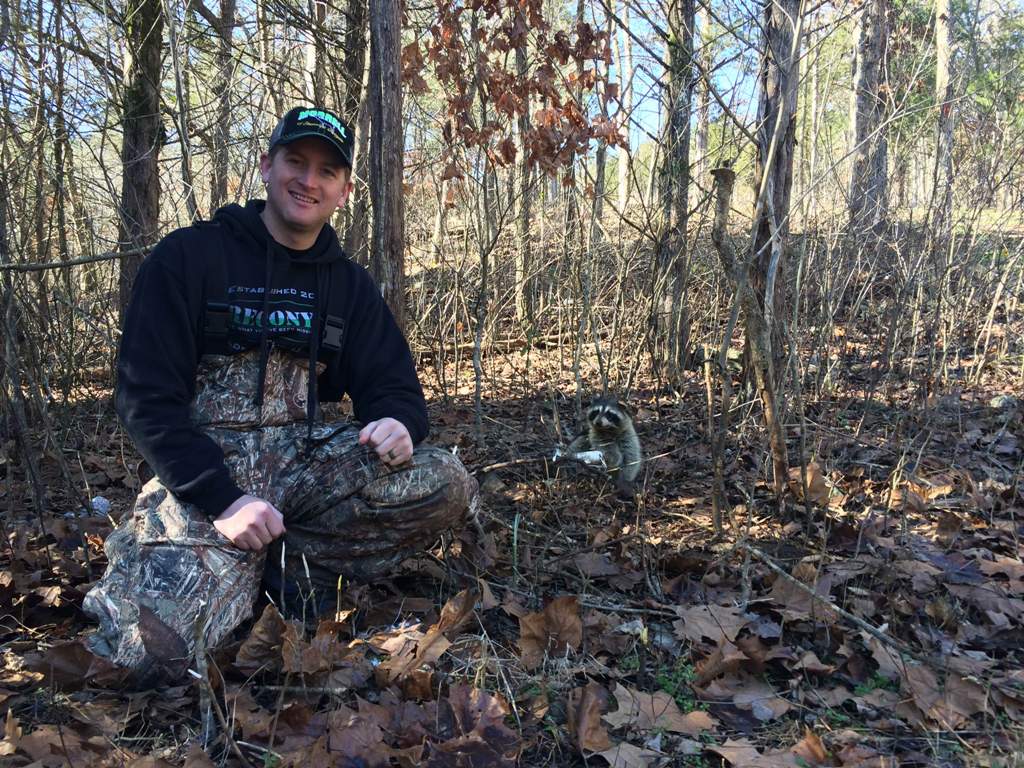
A dog proof trap catches another nest predator, helping the local turkey population.
Every predator trapped is weighed and sexed. Over multiple seasons the information we’ve recorded reveals several things. First, the average weight of predators has decreased. Second, a majority of the predators we trap are males.
As managers we consider this success. By trapping each year we have removed many of the resident predators. We are now catching young males that are moving onto the property to fill these voids. This is why we continue to trap each year. If we stopped trapping it wouldn’t take long before predator numbers spiked.
While trapping at The Proving Grounds, we have watched the predator and prey populations change. Last year we removed over 50 nest predators. That is 50 hungry mouths that did not find turkey eggs. This year the turkey population is the best it has ever been and we helped through trapping!
Whether you measure your trapping success through your records or an increase in deer and turkey numbers, keep doing your part to balance predator/prey relations.
Enjoying The Trap Line,
Daniel
Kansas 10 Point! – Episode #266
Last Chance Buck
Watch this episode to see how it all comes down to the last afternoon for Pro Staffer Aaron Morgan. He’s hunted all season in Kansas, but so far, no chance at a mature buck. Now it’s the last afternoon before Aaron has to return to work and he has a plan.
Checking the Traps
Grant and the boys put out the first traps of the season. Watch to see what they caught! Plus, Grant shares some how to tips with a Duke DP Coon Trap.
Tip of the Week:
Do you want more deer and turkeys on your property?
Get a couple easy-to-use Duke traps and start removing
predators from your hunting grounds.
Warning: You might need more food plots.
Protecting Fawns For The Future
Like most hunters, this is the time of year that I get really excited to see velvet antlers. I get just as excited when I see a flock of turkey poults or twin fawns! On these hot summer days seeing the next generation of wildlife, or more importantly – when I don’t see them, my thoughts turn to predators. It’s a good time to consider how beneficial my past trapping/hunting efforts have been and how I can improve on those efforts in the years to come. Are my techniques and timing helping the survival of deer and turkeys as I think they should?
Balancing predator populations can be an important part of any deer or turkey management plan. As it should, the subject has gotten a lot of attention over the last few years (watch episodes 122 & 220) by the hunting and science communities. It is important for hunters and land managers to note that the timing of predator removal is a critical component of predator removal.
Spotted fawns and turkey eggs and poults are most vulnerable to predation. The removal of predators during the spring and summer months is a critical component of predator control.
At first glance this may seem simple; however, the difficult part of the equation is that in many states, trapping season is restricted to fall and winter months. In my home state of Michigan it is only legal to trap coyotes from October 15th to March 1st. In contrast, our neighbors to the south in Ohio have no closed season on coyotes, allowing trap lines to be out through the critical time of the fawning and nesting seasons.
Check your local regulations and see if there are any summer predator seasons. Whether it’s the challenge of predator calling or you setting a Duke trap line, consider putting in a little extra time during those crucial months when the next generation of game species is most vulnerable to predation.
Happy trails (and full trap lines),
Hunter
Food Plot Damage By Groundhogs
I’ve noticed a trend during recent years of an increasing number of reports of groundhogs damaging food plots. Groundhogs, called woodchucks in some areas, are rodents and strict vegetarians. They love to eat and prosper on soybeans, peas, and clover – all common warm season food plot crops.
Groundhogs breed during the early spring and usually have 2 to 6 offspring with 4 being the most common. It’s easy to see how groundhog sightings can go from rare and novel to common in a few years. Similarly, damage to food plot crops can go rapidly from non-existent to extensive.
A few years ago groundhog sign and sightings were rare at my place. Now there’s evidence of groundhogs at every one of my food plots. Some of my food plots show sign of extensive damage. Groundhogs tend to begin eating soybeans and other annual forages as soon as they germinate and literally kill the plants by eating them to the ground. Their damage is fairly obvious as it is almost always in a semi circular pattern from the edge of the field where their dens usually are.
I like groundhogs, but I don’t like them destroying food plot crops and depriving other forms of wildlife from access to quality forage. Therefore it’s necessary to attempt to reduce the population to a level where the damage they cause is acceptable.
Groundhogs have a good sense of smell and vision. They are very challenging to hunt and make tasty table fair! Small calibers like a .223 are perfect for groundhogs, especially when paired with rapidly expanding ammo like Winchester Varmint X!
Trapping is a better solution where groundhogs are a serious problem. I use the same Duke cage traps I use for catching raccoons during the winter. Almost any type of fresh fruit works well as bait. I prefer cantaloupe as it has a very strong aroma that will last for a few days, even during the heat of the summer. The best success occurs when the trap can be placed within a few feet of the groundhog’s den or directly in the trails that lead from their den to where they feed.
In good habitat (like by a lush food plot) groundhogs often have very small home ranges of 200’ or less. Groundhogs tend to be territorial and it’s common to have multiple groundhogs staking out territories on opposites sides of food plots. In these situations, groundhogs will certainly take more than their share of forage and do extensive damage to the food plot crop. As part of this damage, they limit the amount of quality forage available to other species including deer, turkey, and other foraging wildlife.
Hunting groundhogs is a great way to tune up your whitetail skills with either a gun or bow and provide some good fresh meat before deer season! However, if groundhogs are doing substantial damage to food plot crops, trapping them is the best solution.
Growing Deer (and managing food plots) together,
Grant
Coyote Hunting Tips And Techniques
It’s Friday February 22nd and Grant and I just returned late last night from a coyote hunt in Hamilton, Illinois with Jason Gilbertson and Mike Stock from Winchester Ammunition. Along with their friend Tyler Sellens of Riverview Outfitters. As most of you are aware there was a large winter weather front sweeping across the Midwest on Wednesday and Thursday, so Grant and I headed up on Tuesday hoping to get a couple days of hunting coyotes in before the winter weather hit.
With the threat of wintry weather Grant and I thought it would be a great time to catch some predators trying to find a quick meal before the storm hit. Plus, we would also spend some time with our friends at Winchester Ammo doing something exciting like chasing coyotes! On Wednesday Grant was busy working on a property near Princeton, Illinois so I teamed up with Mike and Tyler for the day. We had a fun day chasing coyotes. At the end of the day Mike headed home just as Jason and Grant arrived to hunt the following day. Before I give away the outcome of our success, you can catch this two day coyote hunt on the upcoming episode of GrowingDeer.tv (GDTV 171)! During this hunt I noticed some different techniques that I’ll share with you now.
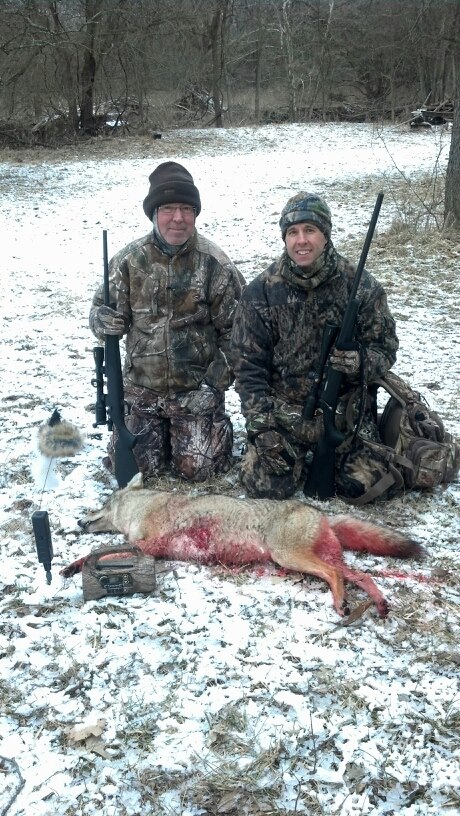
Using these techniques could ultimately lead to a successful predator hunt.
- Approach. You often hear Grant talk about MDE (minimal disturbance entry) for deer hunting, this is also important to coyotes. Our most successful trips happen when we use a hill or slope to our advantage. Approaching from a backside of a hill and just breaking over the top so we’re not alerting anything when approaching is a great way to sneak attack coyotes!
- Crosswinds. Of course when deer hunting, a wind that is consistently in your face is ideal, but sometimes with coyotes they can hang up out of sight because the situation is too risky for them. We typically want our wind direction to be blowing across a field or open area so when a coyote does approach downwind he’s in sight and you can take the shot!
- Be ready! A lot of times coyotes can run into your setup in under a minute of turning on the caller. This happened numerous times during our Illinois hunt. Once the caller had only been on for 36 seconds! With that being said, when the caller is turned on be ready!
- Timing. Coyote breeding season here in Missouri is typically mid to late February so its prime time to call coyotes. Coyotes are very vocal during this time so don’t be afraid to make a few howls either, it might be the only temptation you need to bring one within range.
It’s a slow time of year for deer hunters but an exciting time of year for predator hunters! It’s a great way to ease your cabin fever during these slow months between deer and turkey seasons.
That winter storm swept cross Missouri it dumping everything from freezing rain, sleet, to snow in northern parts of Missouri. Reports of up to 17 inches in places, but in Branson, Missouri there was primarily just sleet and freezing rain. Conditions were very hazardous when we made our venture home; generally it’s a 6 hour drive from Keokuk, Iowa where we were staying to Branson. Last night it took just over 12 hours. Today we are thankful for making it home safely with memories stored away of exciting and challenging days hunting those wiley coyotes!
As always – stay safe and good luck removing predators!
Dreaming of Giant Whitetails,
Adam



